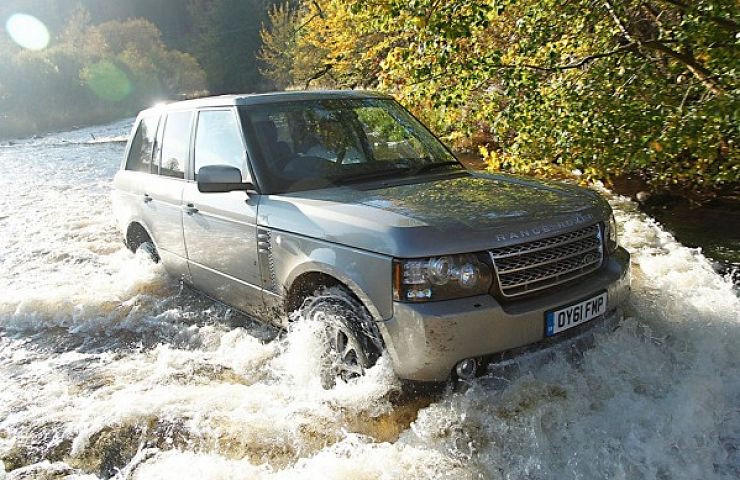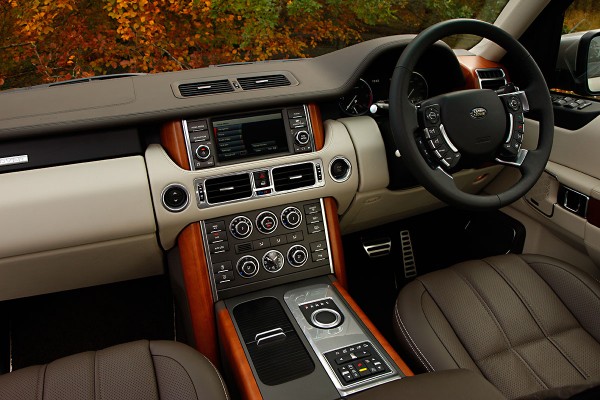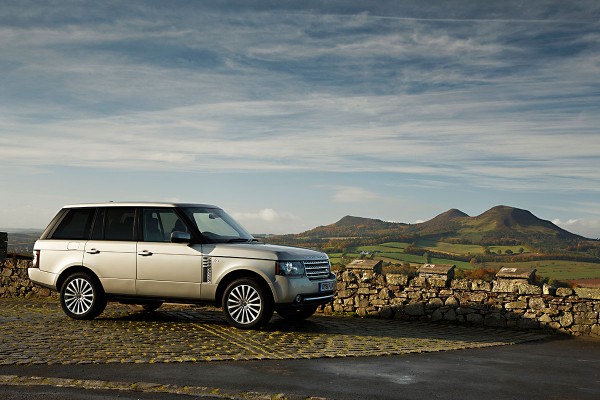Range Rover Mark III/L322 (2003 – 2012)
The second major redesign of the Range Rover, which represented only the second major design update in 32 years, was officially launched at the Detroit Motor Show in January 2002. Designed during BMW’s ownership of Land Rover, the redesign was given a high priority by BMW, with a total “clean sheet” approach and claimed to be the most expensive development for any vehicle ever. The aim was to improve the on-road performance to be competitive with the current range of luxury sedans, whilst keeping or improving the excellent off-road abilities. This was performed by implementing an innovative cross-coupled independent airbag suspension system. The body is of the monocoque type strengthened with an integral chassis. Also included, is the Hill Descent Control (HDC) system that was introduced on the Freelander.
The Mark III borrows numerous design cues from the Classic Range Rover including round headlights under a rectangular lens cover, more prominent castellations on the hood, squarer topline and rear pillar, and the “floating” roof. The large air vents that grace the sides of the front quarter panels were kept because they are functional in aiding air flow past the engine. The rear overhang slopes upwards for improved departure angle. The much-loved rear tailgate arrangement which makes for pleasant afternoon tea stops in the field is retained.
The interior is luxurious, with every possible amenity, but with improved ergonomics and more intuitive controls for items like the windows. Genuine wood trim is used to exude the feeling of a prestigious club that only British cars can achieve.
A monocoque design, one of the stiffest ever made, replaces the separate chassis and body. This allows better use of available space, and a stronger vehicle overall for a given size and weight.
The BMW 4.4 liter V8, borrowed from the 7-series BMW’s, was modified in various ways to withstand the rigors of off-road use, including re-tuning for low speed torque, strengthening of the crankcase to mount the front differential, beefing up of drive belts, etc. Power output, in spite of its twin overhead cams and four valves per cylinder, is only moderately greater than the 4.6 liter version of the old Rover V8, but its wider torque band and 5-speed gearbox yield a modest boost in acceleration.
The new model introduces all-round independent springing, with MacPherson struts in the front and double wishbones at the rear. Travel is increased to 10.75 inches front and 13 inches rear, far beyond previous models. In off-road mode, the air suspension lifts the vehicle 2 inches above standard height, providing over 11 inches of ground clearance and softer spring rates.
The Range Rover’s suspension controller simulates a beam axle when off road, through the cross-linking mentioned above. Software automatically senses increased wheel movements associated with off-road conditions and activates cross-linking valves on both front and rear air springs, allowing air to move rapidly between left and right air bladders. In addition, the new design allows for considerably more wheel travel than earlier models. The result is a quantum advance in off-road comfort and traction.
MARK III/L322 CHRONOLOGY
2002: All-new Range Rover III model goes on sale in June (called a 2003 model in the US). If you buy a “2003” in the US, check the rear of the driver’s door for actual build date.
2003: New model continues unchanged.
2004: No significant changes. An optional Luxury Interior Package added special seats and more leather trim. A special “Westminster Edition” limited run of 450 vehicles allowed buyers to pay $12,000 more for a totally black interior including ebony wood, more front seat motion options, a rain sensor, and 20 inch boneshaker wheels for feeling every bump on the road.
2005: A new touch-screen navigation system, sound system and fiber optic network interlinking these and other in-vehicle systems. No significant mechanical changes. New Discovery/LR3 steals the thunder this year with many features borrowed from the Range Rover, plus more power.
2006: Major model update (introduced summer 2005) — base model gets Jag-derived 300 HP 4.4 litre V8 engine used in new Discovery 3/LR3. New supercharged model gets Jag-derived 4.2 litre supercharged engine (400HP) shared with new Range Rover Sport model (see below) also introduced in the summer of 2005. New tire pressure monitoring system, rear view camera, and re-tuned steering, braking and suspension, and optional swiveling headlamps. Several cosmetic updates including new front bumper, grille, power vents and tail lights. Adoption of road wheel specs from LR3 and Sport. Highway ride height mode setting eliminated.
2007: Significant interior facelift. Redesigned dash including ignition switch moved to upper dash. Improved air conditioning including cooled seats option. Redesigned seats with active head restraint and integral airbags. Two gloveboxes, revised door trim. Terrain Response, electric center and rear locking diffs. HSE gets Supercharged suspension with reduced wheel travel. Introduction of all-new TDV8 diesel (except in US), with power and torque approaching petrol/gasoline models.
2008: Minor trim upgrades such as four-zone air conditioning, IR retarding windscreen and side glass, automatic rain and headlight sensing, redesigned rear seat armrest, additional leather trim additional wood veneer choices, new tread-plates, revised graphics on the touch-screen and instruments, new colors, and another 20″ alloy wheel design.
| EVOLUTION OF THE RANGE ROVER | |||
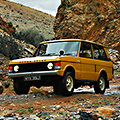 |
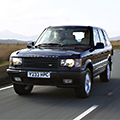 |
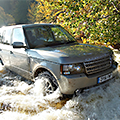 |
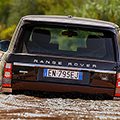 |
|---|---|---|---|
| Evolution of the Range Rover, Part 1 | Evolution of the Range Rover, Part 2 | Evolution of the Range Rover, Part 3 | Evolution of the Range Rover, part 4 |
See Range Rover Cars and Trucks for sale on eBay.

